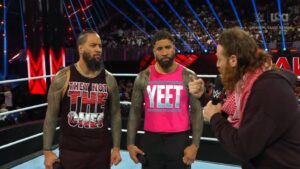This past week, Mexico’s Consejo Mundial de Lucha Libre (CMLL) officially celebrated it’s 85th anniversary, celebrating it’s first card held on September 21, 1933. With it’s 85th Anniversary show last week, CMLL continued its legacy as the longest running and oldest wrestling promotion in the world of professional wrestling. It’s closing in on the record for the longest running promotion of all time, 93 years, set by Germany’s Verband Der Berufsringer (VDB), which ran from 1912 to 2005. In comparison, the WWE has been around in some form since 1948, when it began as Capitol Sports, founded by Vince McMahon‘s grandfather Jess McMahon and Joseph “Toots” Mondt (it was rebranded to World Wide Wrestling Federation by Jess’ son, Vince McMahon Sr., in 1963).

Lucha Libre traces its roots back to 1863, when Enrique Ugartechea created lucha libre, the traditional Mexican wrestling style. Back then, lucha libre was still very much grounded in Greco-Roman style wrestling and pro wrestling events were still very much a regional or local fad. By the early 1900s, wrestling matches were more likely to feature foreign wrestlers on novelty cards that showcasing homegrown Mexican talent. But one man who was intrigued by this rising phenomena in Mexico was Salvador Lutteroth González. After attending his first wrestling show in Ciudad Juarez (near the US border and El Paso, Texas) in 1929, the property inspector for the Mexican Tax Department was hooked, especially by Greek wrestler Gus Pappas. At the time, pro wrestling was sparse in Mexico, so Lutteroth would frequently attend wrestling cards across the border in Texas. Four years later, Lutteroth would change the course of history in Mexican – and global – wrestling.

For the next few years, Lutteroth’s passion for wrestling exploded. Inspired by the organization of American wrestling cards, he was determined to help Mexican wrestling grow the same way. But for it to do that, it needed to move beyond the regional, unconnected novelty shows and it needed to promote and build more homegrown stars. Mexican wrestling would remain a niche, even in its own country, if the shows were constantly built around foreign stars. He saved for years to build his dream, and in 1933, along with financial partner, Francisco Ahumada, he founded Empresa Mexicana de Lucha Libre (EMLL), Mexico’s first national promotion. In 1934, Lutteroth implemented what would soon become one of lucha libre’s most recognizable elements, the masked wrestler. Ironically, it would be to cover the nationality of an American wrestler, but that year saw the debut of Maravilla Enmascarada (“The Masked Marvel”), a masked grappler that soon became a hit with the crowd.

Due to the popularity of Maravilla Enmascarada, Lutteroth began to experiment with more masked wrestlers, creating intriguing battles of good vs. evil, that soon created a unique culture within EMLL and its fanbase. Night by night, he saw EMLL’s audience and gates grow. And just as his masked revolution was building speed, he discovered a man who would become one of the greatest ambassadors of lucha libre and a man many consider the greatest Mexican wrestler of all time, El Santo.

El Santo became the heart and soul of not only EMLL, but lucha libre. He was Mexico’s Bruno Sammartino and Hulk Hogan all at once – long before either of them were even wrestling. He would go on to become a 5x Mexican National Middleweight Champion (considered the top belt in Mexico), winning his first title in 1942. Originally a rudo (or heel) against EMLL’s top técnico (face) Tarzán López, the aura and mystique of Santo was too strong. With the rise of television, Santo became not only EMLL’s biggest star, but a cultural phenomenon in North America. By 1952, he was the subject of his own comic book, and by 1958, he was an action star in his own franchise of films.

One thing Lotteroth had on his side was lady luck. He won the lottery twice in the early days of EMLL, with both having huge impacts on EMLL’s business. In 1934, Lotteroth won the Mexican lottery, and poured the entire 40,000 peso winnings (equal to about $40,000 USD back in 1934) into renovating his local venue into the best wrestling venue it could be. With gates booming and attendance skyrocketing, he built the 6500 seat Arena Coliseo to be his main home. By the 1950’s, EMLL was getting bigger still, especially with Santo well on his way to superstardom. Which is when the second lottery win occurred – the staff of Arena Coliseo, including Lotteroth, had purchased a large amount of tickets and won the grand prize of 5 million pesos. Lotteroth immediately took his winnings and built what is still considered the “cathedral of lucha libre”, Arena Mexico, in 1956, with a capacity of 16,500 people. With television, El Santo and Arena Mexico, Lotteroth had now created an empire in Mexico that was elevating Mexican wrestling to heights undreamed off 20 years prior.

Lotteroth continued to seek out the best Mexican wrestlers he could find, adding names like Black Shadow (1942), Gory Guerrero (1943), Blue Demon (1948), Cavernario Galindo (1948) and Ray Mendoza (1954) to the roster. In 1952, a lucha de apuesta (betting match) between Black Shadow and El Santo in a mask vs. mask match became EMLL’s biggest attraction to date, solidifying the importance of the mask to lucha culture and making the lucha de apuesta a major story point for nearly a century afterwards. Black Shadow was defeated, losing his mask, he continued to main event matches in Mexico for years to come. It was by no means the first lucha de apuesta – that had occurred in EMLL in 1940, when Murciélago Velázquez was forced to unmask following a defeat to Octavio Gaona in a hair vs mask match – but it’s considered the most important one in lucha’s history.

By the late 1950s, Lutteroth, now in his late 50’s, began to hand over more and more control to his son, Salvador “Chavo” Lutteroth Jr. Chavo would continue his father’s legacy of finding the top talent in Mexico, bringing in new stars like Mil Mascaras (1965) and Perro Aguayo (1968). In 1975, EMLL faced it’s first true competition in Mexico, when NWA Light Heavyweight Champion Ray Mendoza left the company to start his promotion, Universal Wrestling Association (UWA), as Chavo began to assume more and more control of EMLL. UWA would become a strong competitor to EMLL, building stars like El Canek, Dos Caras and Fishman, before folding in 1995.

Chavo, unfortunately, did not command the same respect as his father, nor the creative imagination to keep EMLL as interesting as it had been. UWA was closing in on it’s audience and finally, in 1980, he handed over not only control of the promotion but ownership to his nephew Francisco Alonso Lutteroth (better known as Paco Alonso). Paco had been working with EMLL since 1975 himself, but in the promotions department, but showed a keener mind for the business than his uncle. As the 1980s saw pro wrestling boom internationally in the mainstream due to the rise of the World Wrestling Federation (WWF), the National Wrestling Alliance (NWA) – of which EMLL had long been a standing member – was in splinters, as territories began in-fighting to combat WWF’s growing dominance. Paco would make the decision to withdraw EMLL from the NWA and it’s political grandstanding, making it’s truly independent from outside interference. He also elevated one of his former wrestlers, Espectro Jr., to co-head booker. Espectro Jr., real name Antonio Peña, added some new blood to EMLL’s bookings, working alongside long time traditionalist booker, Juan Herrera.

In 1991, Chavo decided to rebrand the company after 58 years of being EMLL, changing the company name to it’s current name, Consejo Mundial de Lucha Libre (or CMLL), in an effort to further distance itself from the NWA tied EMLL. A year later, Antonio Peña would give his resignation to Chavo – Peña felt that CMLL should be pushing it’s younger stars, like Konnan and Octagón, rather than focusing on the fading draws of it’s much older ones. Peña would start up CMLL’s biggest rival to date – and one that continues to this day – Asistencia Asesoría y Administración (AAA) that year, bringing many of CMLL’s young prospects, as well as signing new stars like Rey Misterio Jr., Psicosis. AAA’s quick ascension also forced UWA to fold, with AAA absorbing their stars, like Perro Aguayo, El Canek, Dos Caras and Los Villanos.

CMLL continued to succeed in Mexico, and while the NWA alliance failed at the end, it would build other relationships over the years. In 2007, they formed a short alliance with Total Nonstop Action (TNA) for a few years, sending wrestlers for the TNA World X Cups, and then in 2008 with NJPW, which still exists today. Since 2011, the two companies have co-promoted an annual event called Fantastica Mania. In 2014, they partnered with emerging promotion Lucha Libre Elite in a developmental capacity, and in 2016, they expanded their NJPW alliance with the IWGP Conception, partnering with Ring of Honor as well.

CMLL continues to draw in Mexico, with their 20-year rivalry against AAA akin to the WWE vs WCW wars of the 90s, and Arena Mexico remains the cathedral of lucha libre. And thankfully, CMLL learned it’s lesson from Peña’s departure, and have become breeding grounds for some exciting talents over the years, like Volador Jr., Caristico, Rush and Los Ingobernables (that originally included WWE Superstar Andrade ‘Cien’ Almas), and Dragon Lee.
Happy 85th birthday CMLL! Viva la raza!






